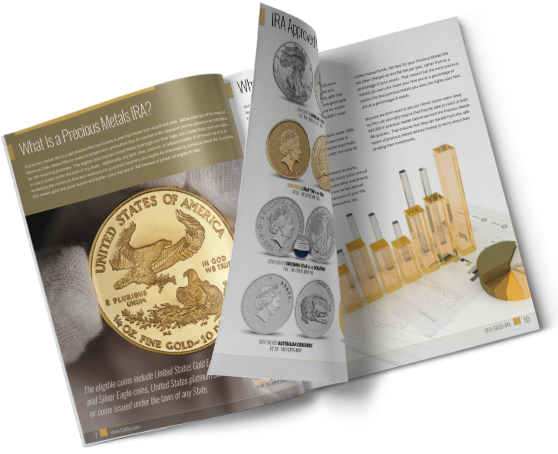
IRA Rollover Defined
An IRA (individual retirement account) rollover is the transfer of funds from a retirement account into a traditional IRA or a Roth IRA. This can be done by a check written by the custodian of the contributing account. This check is then taken by the account holder and deposited into an IRA rollover account. This can also be done through a simpler direct transfer.
A direct rollover IRA, or direct transfer, occurs when funds are moved from one retirement account like a 401(k) and moved directly to an IRA. Most rollovers take place when the retirement account holder switches jobs and want to move assets to an IRA. Rollovers also occur when account holders want to switch IRAs or find an IRA with better investment opportunities. A common example of an IRA with better investment opportunities is called a self-directed IRA.
To begin an IRA rollover, you will need to ask your current IRA custodian to write a check and send it to your new IRA. If the rollover IRA is being funded from an outside IRA, the current IRA custodian sends the rollover amount to the new IRA plan’s custodian. If you wish to complete this process yourself then you will need to have the check sent to you. You will then cash the check and deposit the funds within 60 days. If this process is not completed within 60 days, income taxes will have to be paid on that amount and the IRS will treat it as an early distribution.
Rollovers and Taxes
When completing a direct transfer, no taxes are withheld. The entire amount withdrawn is directly transferred to the other account, provided it’s completed within 30 days. If the transfer is not completed as a direct IRA rollover, the Internal Revenue Service (IRS) requires a withholding penalty of 10% from any IRA and 20% from non-IRA retirement accounts, which will need to be paid during tax filing season.
Common IRA Rollover Mistakes to Avoid
There are many IRA rules that can seem daunting, and most investors need to be aware of these to make the most of their retirement savings. These rules apply to all IRA procedures, including a gold IRA rollover.
The 60-Day Rule
After receiving an IRA check, you have 60 days to complete the rollover to another IRA. That’s 60 days, not two months, which is an easy mistake to make. Even something as small as one day can negatively impact your taxes. Not completing the rollover in this time period or asking for a waiver or extension from the IRS results in that amount being treated as ordinary income.
You must include this amount as income on your return and it will be taxed at higher ordinary income tax rates, not capital gains rates. If you were under 59 1/2 years old when this happened, you’ll be hit with an additional 10% penalty.
Same Property Rule
An IRA rollover from two IRAs must have the same property. Therefore, you can’t take out cash to purchase other assets and roll these over into either IRA. The IRS considers this cash distribution from the IRA as ordinary income. This might seem tricky, so the example below will clarify the same property rule.
Bob, age 57, has decided to roll over his IRA between financial brokerages. However, he wants to use IRA assets to purchase a company’s stock. To do this, he takes a portion of the funds from his IRA, buys the shares and places the remaining cash in a new IRA. Then he places the stock into the same IRA to take advantage of tax-deferred treatment.
One-Year Waiting Rule
There is a one-year period that prohibits you from making more than one tax-free rollover of any IRA per year. On top of this, some banks charge high check fees with regard to moving funds to a broker when you are moving your IRA. This rule doesn’t apply to eligible distributions from employer–sponsored plans like 401(k)s, 403(b)s and 457s. It also doesn’t apply to an IRA rollover to Roth IRAs, which are called Roth conversions. You’ll have to pay taxes on contributions and earnings in traditional IRAs during Roth conversions. Therefore, it’s wise to use resources like this Roth conversion calculator.
RMDs Can’t Be Used for an IRA Rollover
You can make tax–free rollovers from your IRAs regardless of age. One factor to consider is RMDs, or required minimum distributions. These force investors to take specific amounts from tax–deferred accounts each year. Not complying can result in severe taxes of up to 50% of the RMD amount. You can’t roll over your (RMD) since it’s seen as an excess contribution.
Thus, if you need to take annual RMDs, take them prior to starting a rollover.
Don’t Use a Rollover If…
You’re just moving an IRA between financial institutions and don’t need the funds. Consider a direct transfer, as this is non-reportable and can be done an unlimited number of times during any period. Using a transfer bypasses the withdrawal process of the rollover, which specifically moves the right assets to the end account. This also allows investors not to have to worry about the 60-day rule.
These IRA rollover rules might seem tricky, but our experts are available to help you navigate this process and secure your retirement plan. Call or email us to speak with one of our representatives today! Please be sure to talk to your tax advisor for more assistance.

Ready to Protect Your Retirement Savings?
Get our FREE Self-Directed IRA Guide
With the Goldco self-directed IRA guide, you’ll learn everything there is to know about investing in gold and silver with a precious metals IRA. Whether you’re a long-time precious metals investor or a first-time buyer, our FREE guide will explain the advantages of precious metals IRAs, how to get started investing in precious metals, and how long the IRA process will take.
Once you’ve read our FREE IRA guide, our specialists are available to answer any additional questions you have about opening a gold or silver IRA. If you’ve wished you could invest in gold and silver but didn’t know how, request your FREE self-directed IRA guide today and learn how you can harness the power of gold and silver to protect your retirement savings, grow your wealth, and add much-needed stability to your investment portfolio.

Ready to Protect Your Retirement Savings?
Get our FREE Self-Directed IRA Guide
With the Goldco self-directed IRA guide, you’ll learn everything there is to know about investing in gold and silver with a precious metals IRA. Whether you’re a long-time precious metals investor or a first-time buyer, our FREE guide will explain the advantages of precious metals IRAs, how to get started investing in precious metals, and how long the IRA process will take.
Once you’ve read our FREE IRA guide, our specialists are available to answer any additional questions you have about opening a gold or silver IRA. If you’ve wished you could invest in gold and silver but didn’t know how, request your FREE self-directed IRA guide today and learn how you can harness the power of gold and silver to protect your retirement savings, grow your wealth, and add much-needed stability to your investment portfolio.



